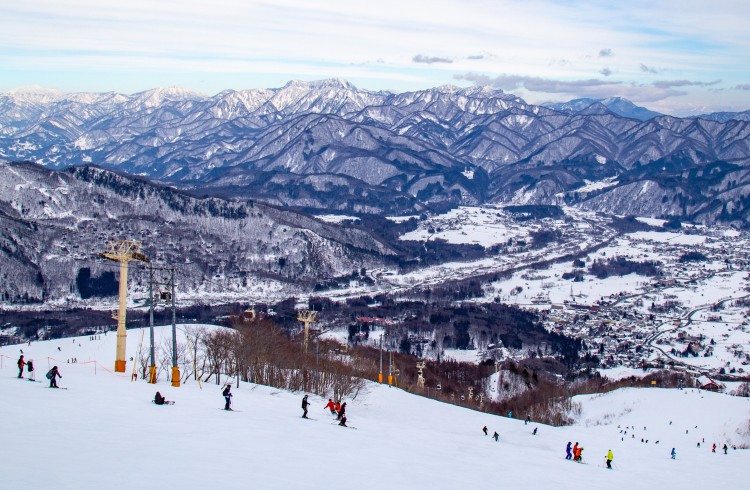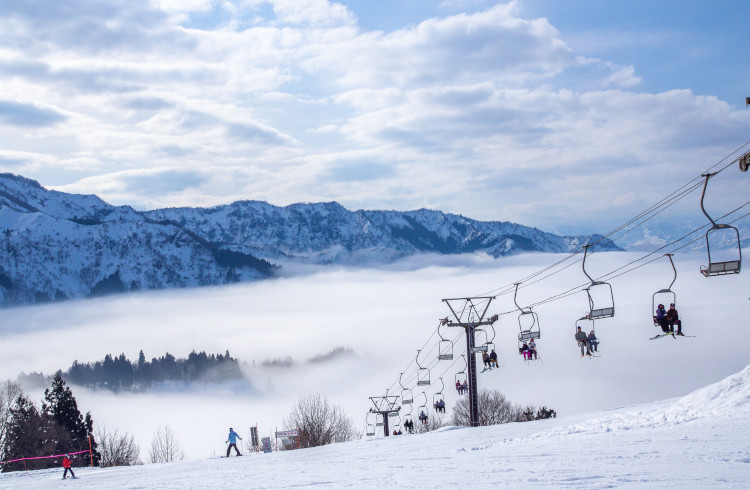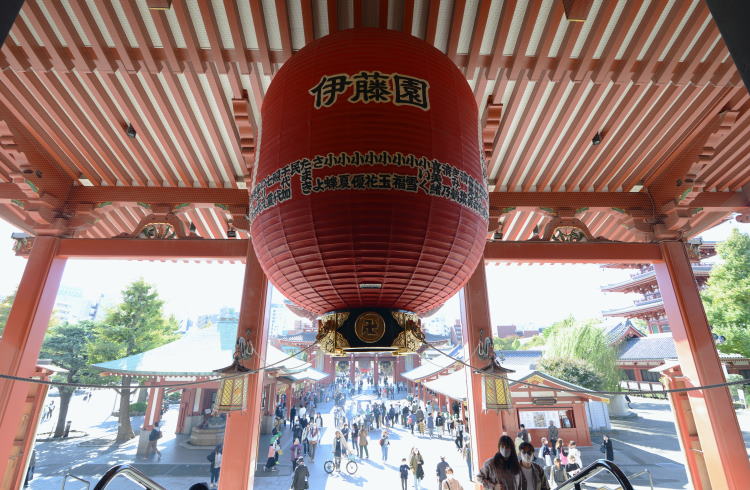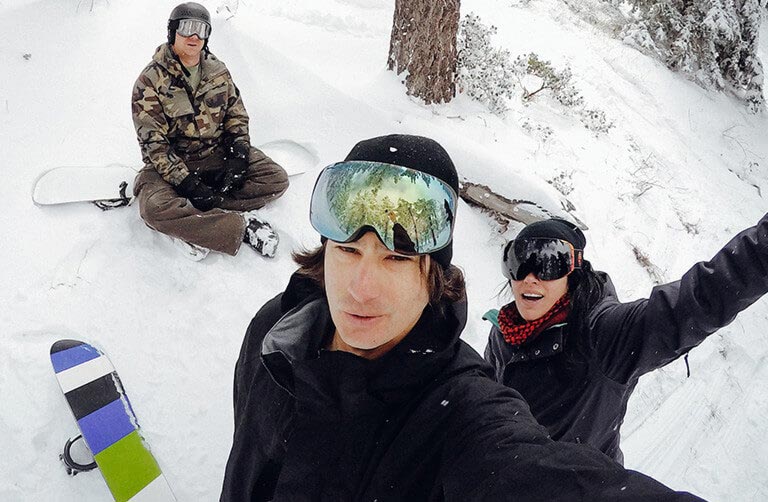What You Need To Know About Skiing Safely When in Japan
But before strapping on your skis or board, review some essential ski safety tips that are applicable not only in Japan, but wherever you may hit the slopes.
 Photo © Saha Entertainment
Photo © Saha Entertainment
Ski season is kicking off in northern Japan, home to some of the world’s best and most plentiful powder snow, as well as many world-class resorts. What do you need to know?
- Know the terrain and your limits
- Be aware of and prepared for changing weather conditions
- Obey all warning signs and trail markers
- Who has the right of way skiing in Japan?
- What to do in a skiing accident
Know the terrain and your limits
One major cause of injuries on ski slopes is people trying to ski terrain beyond their abilities. So, it is essential to be aware of the limits of your own skills, and how to match them to a mountain’s terrain.
Japan’s ski fields follow the global code of trail difficulty markers, with a green circle denoting “easiest,” a blue square denoting “more difficult” and a black diamond signifying “most difficult.” Double black diamond-marked slopes are “expert only” extremely challenging terrain that should only be undertaken by highly skilled skiers and snowboarders in good snow conditions.
Also, note that different mountains may have different perspectives on exactly what sort of terrain qualifies for the specific difficulty levels. One hill’s blue “more difficult” trail could be considered a black diamond “most difficult” trail at another resort. So before challenging yourself with advanced terrain, explore some easier options to see how a given mountain is labeling the trails there.
Trail markers, like most signs in Japan, are generally written in English as well as Japanese text.

Be aware of and prepared for changing weather conditions
Dressing to match the weather is not only essential for comfort but can be critical for safety. Check snow conditions and weather forecasts (generally marked in English on signs at Japanese ski resorts, and on ski resort websites) so you can dress appropriately for the expected conditions.
Dressing in layers gives you the option to add or subtract warmth if conditions change. Wet gloves in bitterly cold weather conditions can induce frostbite, so take care to dry them out in a lodge should this happen. Exposed skin in cold weather and strong winds can also increase the risk of frostbite, so bring along full-face coverings under these circumstances. On sunny days, particularly at high elevations, the risk of sunburn is high, so apply and reapply sunscreen. High elevations with low humidity conditions are great for creating the light fluffy snow for which Japan is famous, but also dehydrate skiers rapidly. Be sure to hydrate by drinking plenty of water.
Changing weather conditions can also change the difficulty factor of ski slopes. What might be a very manageable expert black diamond slope on a day with deep, soft power can become much more risky and dangerous under icy conditions. Even within a single day conditions may change on a given ski run, so approach with caution before launching into a trail.

Obey all warning signs and trail markers
Japan is a rule-happy country, as any visitor will quickly discover plentiful warning signs everywhere, most of them written in English as well as Japanese. Ski slopes are no exception, with many caution signs posted on and around the mountains (accompanied by often incessant public address announcements on speakers). Be sure to follow these rules, both for your own physical safety and for potential loss of lift ticket or legal consequences, or at a minimum a strong talking-to from staff.
It is critical for the safety of yourself and others to stay within marked ski area boundaries. There is a real risk of avalanches, particularly in heavy snow regions like Japan’s Alps and Hokkaido. Ski resorts take extensive precautions to keep their in-bounds terrain avalanche-safe, but they do not patrol outside of boundaries. If you venture outside of ski area boundaries you may trigger an avalanche that can hurt or kill yourself and others. Don’t do it. You also run the risk of getting lost or injured beyond an area that is patrolled by safety staff. Your cell phone may not have service in remote Japanese mountain areas, so you may not be able to call for help. If venturing in the backcountry in approved areas, be sure to go with a well-qualified local guide with proper safety equipment.
Many indoor areas in Japan still require mask-wearing for COVID-related safety (marked with signs on the doors), so be sure to bring a few with you and stash a couple in your ski jacket for when you stop in the lodges on the slopes. There is no mandated government requirement for mask-wearing, but many Japanese continue to wear them both indoors and outdoors.
Who has the right of way skiing in Japan?
A basic safety rule of the road for skiers in Japan and anywhere else is that the downhill skier has the right of way. If you are uphill of another skier, it is your responsibility to avoid them, and give them space for unexpected turns or a crash. If there is a collision, the uphill skier is generally held liable (although Japan is not as litigious a society as the U.S.) and in some circumstances, you may be ejected from the ski hill or have their pass revoked.
But even if you are a downhill skier who has the right of way, you should still always look uphill for safety’s sake. Be mindful of your surroundings of incoming uphill skiers, especially if you are crossing the path of another ski run.
What to do in a skiing accident
The global warning sign of a ski accident on the slopes is a pair of crossed skis (or a vertically balanced snowboard or two) uphill from the injured skier. This is not only a sign for ski patrol to come to help but also serves as a barrier to keep other skiers from crashing into the scene.
If you see a pair of crossed skis while skiing, maneuver away from the area, and alert ski patrol if they are not already on the scene. Most staff ski patrol at Japanese resorts will know at least enough English to help, and many native-English-speaking instructors will also be on the slopes and can help facilitate care and transport in case of emergency.
And of course, it is a wise idea to purchase travel insurance that specifically covers skiing and snowboarding or other winter activities that you plan to do on your travels.

Related articles
Simple and flexible travel insurance
You can buy at home or while traveling, and claim online from anywhere in the world. With 150+ adventure activities covered and 24/7 emergency assistance.
Get a quote

No Comments